
Urban rewilding seeks to blur the boundaries between human and natural habitats. Image: NParks
This year, a couple of unexpected residents moved into London’s West End: a pair of nesting black redstarts, one of the UK’s rarest birds.
No bigger than the common robin and marked with a distinctive red tail, these birds used to be prevalent in London but in recent years have been in decline. The Royal Society for the Protection of Birds estimates there are fewer than 100 breeding black redstart pairs across the whole of the UK.
Encouraging, then, that they have been spotted in the heart of London. Better yet, they weren’t the only unusual sighting of late, with four bat species and a great spotted woodpecker also recorded in the area.
Their return is the result of an “urban rewilding” movement that’s growing across the world.whereby environmentalists, property specialists and other groups try to bring nature back into our city centres.
Key to its success is the creation of habitats where nature can thrive, rather than adding green spaces just for aesthetic reasons. It comes at a critical time, too, with nature declining at a rate unprecedented in human history.
According to the UN’s IPBES Global Assessment report on biodiversity and ecosystem services, released last May, the rate of species extinction is accelerating, with grave impacts on people around the world now likely.
As professor Sandra Díaz, who co-chaired the report, explained at the time of its release: “Biodiversity and nature’s contributions to people are our common heritage and humanity’s most important life-supporting safety net. But our safety net is stretched almost to breaking point.”
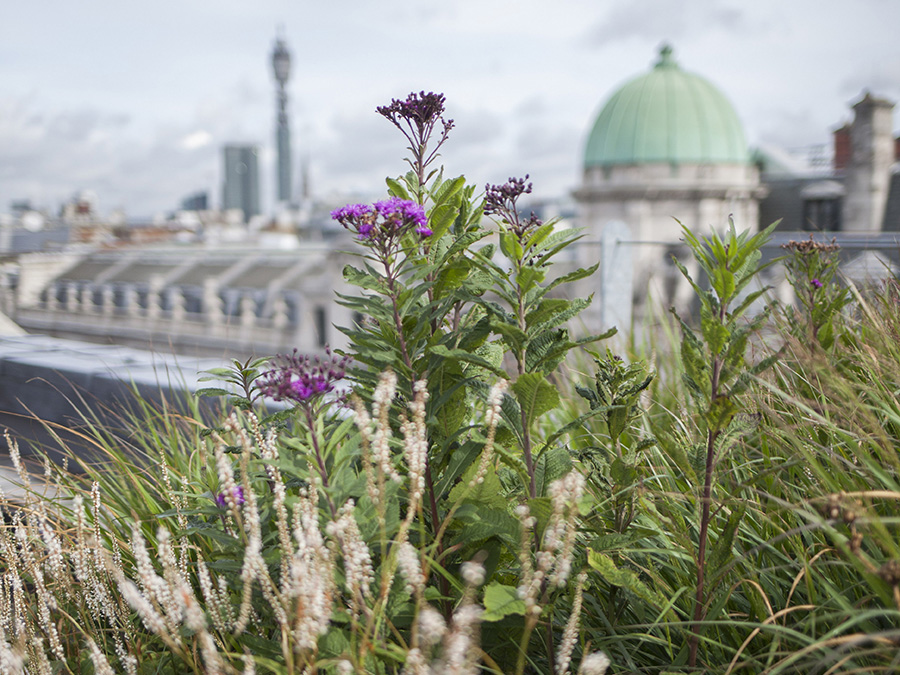
London’s Wild West End
The positive results in London have been driven through the Wild West End initiative – a partnership between central London’s largest property owners, among them the Crown Estate, Great Portland Estates and Grosvenor, with Arup providing ecological, landscaping and architecture support.
The project is based around a series of new green corridors created between existing parks, including Hyde Park and Regent’s Park. Each corridor, or “green stepping stone”, is made up of a combination of green roofs, walls, planters, street trees, boxes and pop-up spaces. As a minimum, they measure 100 m2 (1,076 ft2) and occur every 100m to encourage specific species to move in.
“The Wild West End had this real vision,” begins Emily Woodason, Arup associate landscape architect, who has been involved in the programme since its inception.
“It wanted to achieve not only ecological connectivity – so stepping stones for wildlife to travel between parks – but also to create more access to, and interaction with, nature for residents, visitors and workers, giving them better wellbeing benefits but also raising awareness of planning for green spacing in our cities.”
She adds, “A lot of the green infrastructure [built] in urban areas (in the past) has been purely aesthetic and quite low functioning. Urban rewilding provides that green infrastructure with the much wider ecosystem benefits that the natural world can offer.”
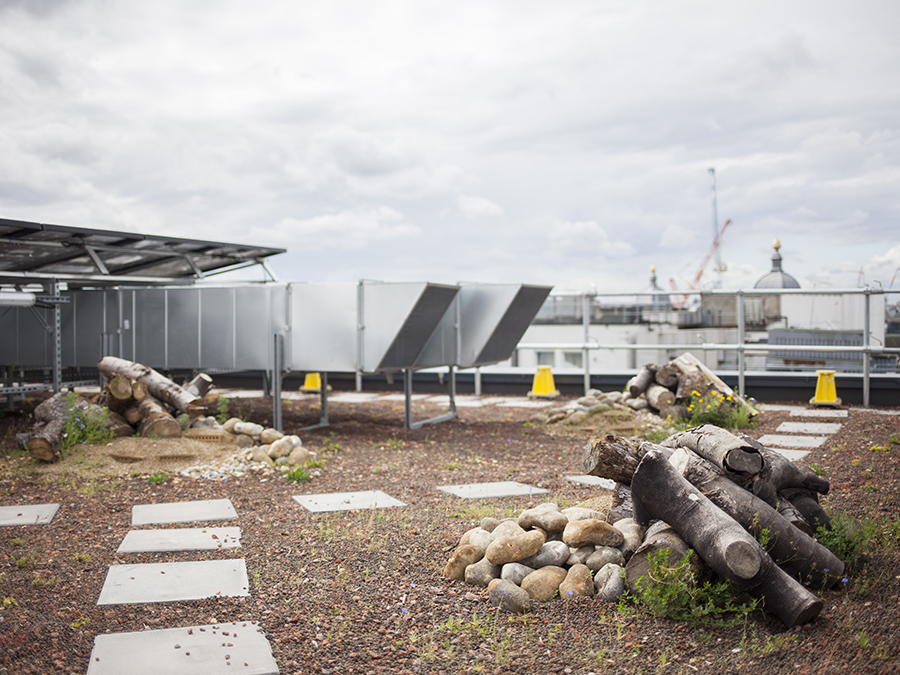
“Urban rewilding provides green infrastructure with the much wider ecosystem benefits that the natural world can offer” Emily Woodason, Arup
Nature Boardwalk in Chicago
Similar initiatives can be seen in Chicago’s Nature Boardwalk. Once a manmade pond, it has been transformed into a nature-filled environment teaming with native plants, birds, frogs, turtles and other wildlife.
Seth Magle, director at the Urban Wildlife Institute at Lincoln Park Zoo, which led on the rewilding project, explains how it came about. “Nature Boardwalk was a space that had for many years been completely human-dominated; people would use paddle boats on the pond and there wasn’t much thought given to what kind of animals lived there.
“So there was a very deliberate attempt about 10 years ago to make it a space where animals and humans could thrive together. You have the boardwalk, which provides space for people to walk, and then you have a lot of space that’s off limits to people where animals can thrive, and we were very careful about only introducing native plants or animal species.”
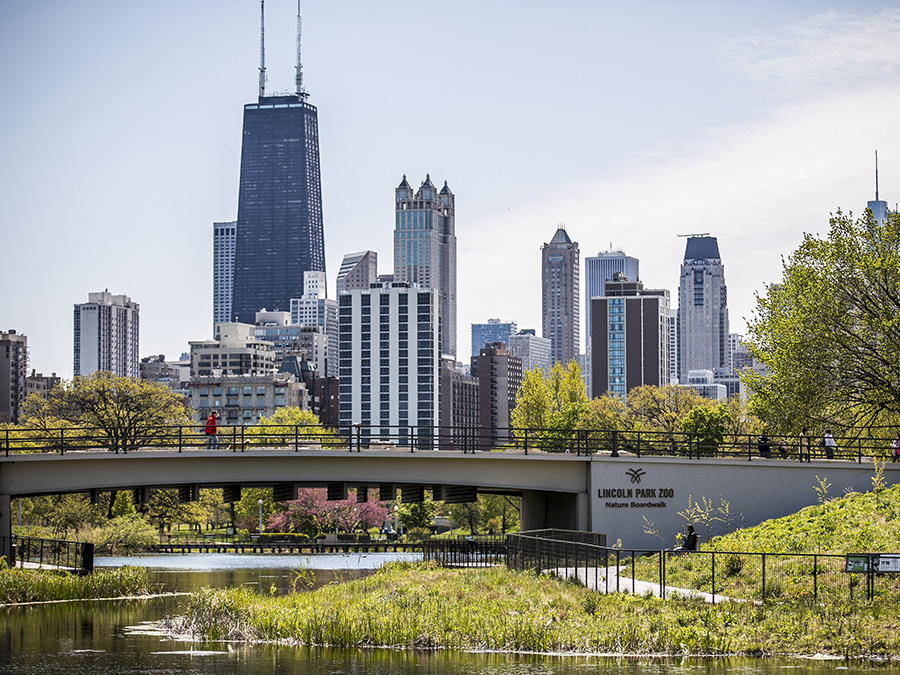
Although popular today, the project was not without its challenges, particularly with residents who voiced concerns over loss of space for humans and the reintroduction of certain plant and animal species such as the coyote – the latter of which was recently spotted roaming down Chicago’s premier shopping thoroughfare, Michigan Avenue.
“People were furious for a couple of years about losing their shade from these big trees that surrounded the pond and there is less space for people now than there used to be; they can’t paddle around in the water,” recalls Magle. “But I was surprised at how quickly those bad feelings faded away.
“When [coyotes] first started to become really common, people wanted to remove them. But over time, people have come to accept they are just part of the urban landscape and most of the time they don't get in anyone’s way.”
In addition to the challenges around residents, Magle explains the difficulties of getting the private sector on side.
“It’s definitely a tough discussion to have. These are people who are trying to make money and do their job and you’re talking about an additional restriction. That’s difficult for them.”
On this, Woodason – whose Wild West End project was driven by private sector partners – says that it is critical to lay out the economic value against any associated costs.
“The Crown Estate was very aware of the value of green space for its customers and the link between green space and improved wellbeing – as well as the increase in property prices,” she says.
“Some of the concerns landowners often have are about increased maintenance, because green spaces do require maintenance. But what we do is try to demonstrate value – so, the economic value that a green space can provide – and weigh that up against the cost.”
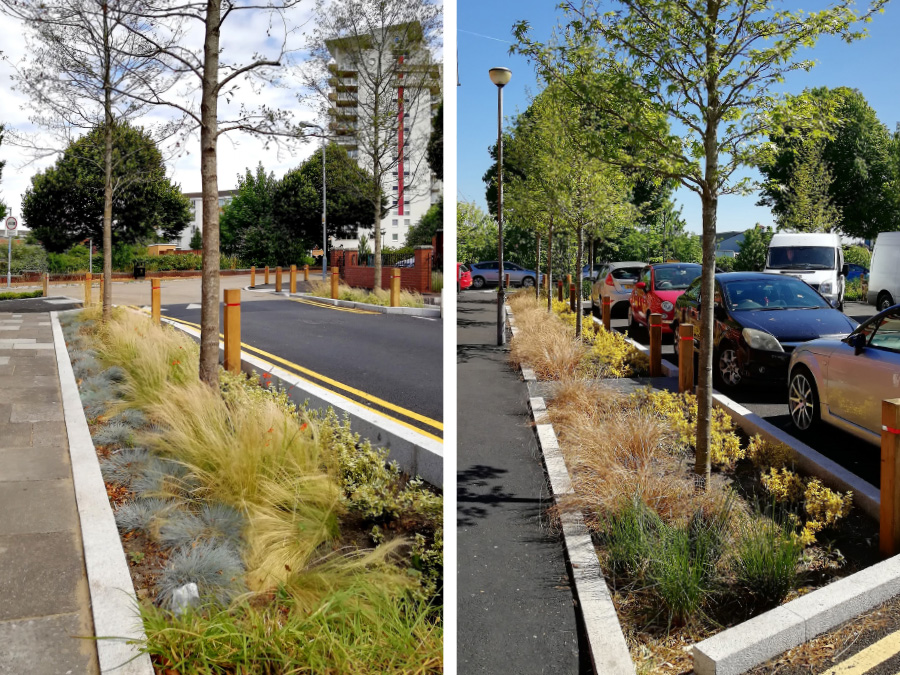
Woodason points to Cardiff’s Greener Grangetown project as an example of economic gain. The project installed a series of sustainable drainage systems made up of more than 130 trees and 108 rain gardens – planted areas that mimic the natural environment and provide a sustainable method for catching and cleaning rainwater – which again provided the public with “green corridors”.
The project resulted in 40,000 m3 of surface water being removed from the public sewer system each year. That captured water was then treated and put back into the natural river sources. It reduced capacity and the need of a pumping station, which in turn also reduced the carbon usage, with the pumping station being out of action.
Singapore’s public sector support
In Singapore, a reputation as a “garden city” is inspiring a raft of schemes that show how creating space for nature can boost the bottom line for property owners. One of them is Parkroyal on Pickering, a green hotel on the fringe of the central business district in Singapore, developed by WOHA.
The group’s founding director, Wong Mun Summ, in 2014 explained the thinking behind the project: “We wanted to create a hotel and a garden, which was a unique selling point for the hotel.
“One of the things we wanted to explore was the idea of green replacement on any buildings in the city and we have [created] more that 200% of green and blue areas within the building, which is larger than the site itself.”
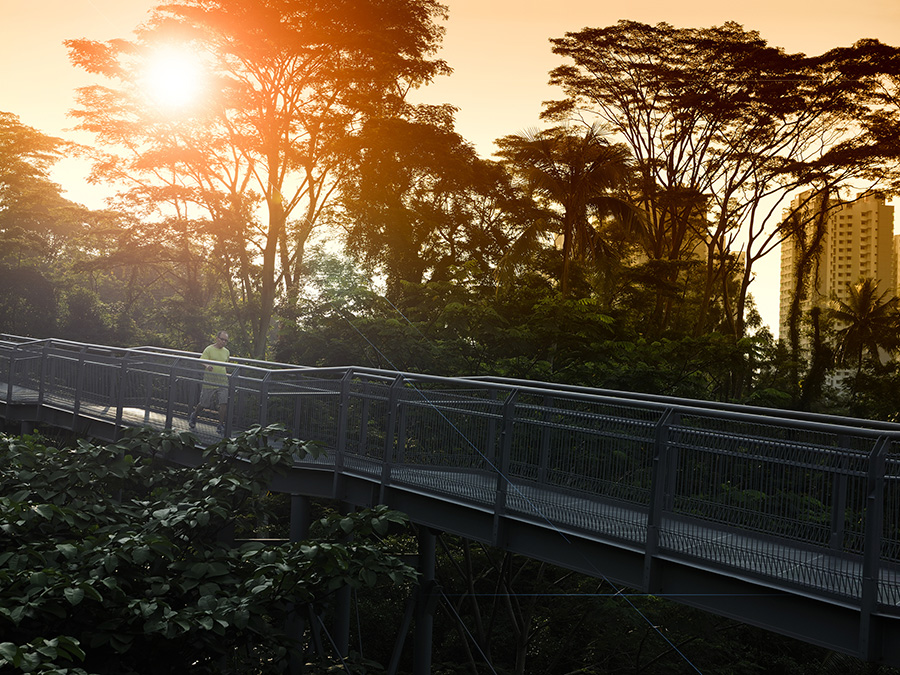
Tim Beatley, founder of Biophilic Cities, which partners with cities around the world (including Singapore) to build an understanding of the value of nature in cities for urban residents, points to this scheme as being a shining example of how urban rewilding can provide financial gain.
“We can encourage developers to think about these issues but they’re thinking primarily about their profit margins and bottom lines, so Parkroyal is a good example for this. The owner was so happy [with the building] that at the end of it they were able to double their room rate because of all the nature features.”
Beatley makes the point that the public sector also plays an important role in incentivising urban rewilding, and highlights the support Singapore’s government gives to green initiatives.
“Singapore has a programme for covering half the cost of installing things such as green roofs or walls. Then there’s technical assistance and an annual award for the ‘best skyrise greening project’, [the latter of which] gives developers visibility in the marketplace.
“So, there are many things the public sector can do in a city to encourage the private sector to be doing more of those kinds of things.”
“We can encourage developers to think about these issues but they’re thinking primarily about their profit margins and bottom lines” Seth Magle, Urban Wildlife Institute
Opportunity in the face of COVID-19
Of course, any topic today is now set against the backdrop of COVID-19, and the impact it will have on our day-to-day lives – not least how we interact with our built environment.
The shift to flexible working, for instance, has been greatly accelerated by the pandemic, and looks likely to become a more permanent feature for businesses, both as a way to cut down on rents and to give their workers more choice.
This shift in working behaviour comes at an interesting time. Global initiatives are already calling for urgent change in the built environment, such as the UN’s 17 Sustainable Development Goals (SDGs). RICS is committed to helping professionals in the land, construction and real estate sectors to implement these goals, which include improving health and wellbeing; making cities safe and sustainable; and protecting, restoring and promoting sustainable ecosystems.
Could COVID-19 present an opportunity to tackle some of these major social, economic and environmental challenges looming over the sector, and meet some of those SDGs?
For Woodason the answer is yes. She says creating more green space could entice workers back into city centres, while providing a boost in their wellbeing. For example, rooftop allotment schemes such as Paris’s 14,000 m2 (151,000 ft2) rooftop farm (the largest in the world) offer an innovative solution for maximising the use of city centre buildings.
“If office buildings are only 50% utilised, there’s huge potential to transform part of that building into an urban park. We have a much smaller scale [than the Paris rooftop] allotment on a Crown Estate project, which has been created on an underutilised rooftop just above Regent Street,” she says.
“It was a very simple allotment scheme, with raised planters as well as a beehive, but that office building now has a waiting list for the allotment club.
“Before work or on their lunch break, office workers can go up to the rooftop, do some planting and go home with some freshly picked vegetables and I think that’s a fantastic and valuable experience.”
